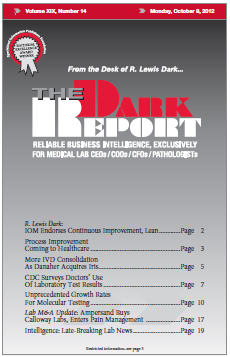CEO SUMMARY: Danaher Corporation continues to fuel growth by continually acquiring in vitro diagnostics (IVD) companies. Its latest purchase is Iris International, which manufactures automated urine microscopy systems. Danaher also has $5 billion available that it could spend in the next two years on acquisitions. Because of its acquisitions over the past decade, Danaher now …
More IVD Consolidation as Danaher Acquires Iris Read More »
To access this post, you must purchase The Dark Report.


